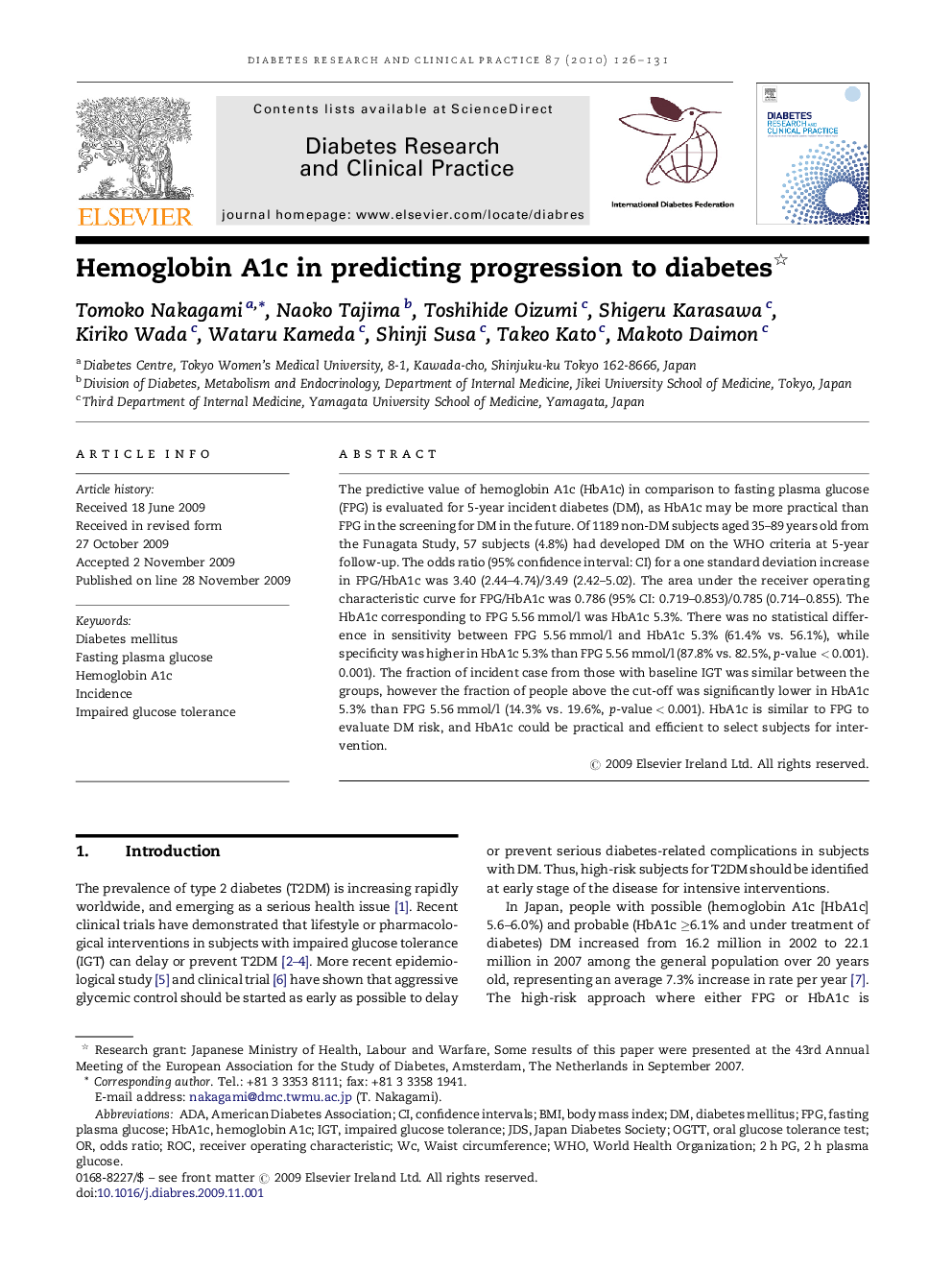| Article ID | Journal | Published Year | Pages | File Type |
|---|---|---|---|---|
| 2797564 | Diabetes Research and Clinical Practice | 2010 | 6 Pages |
The predictive value of hemoglobin A1c (HbA1c) in comparison to fasting plasma glucose (FPG) is evaluated for 5-year incident diabetes (DM), as HbA1c may be more practical than FPG in the screening for DM in the future. Of 1189 non-DM subjects aged 35–89 years old from the Funagata Study, 57 subjects (4.8%) had developed DM on the WHO criteria at 5-year follow-up. The odds ratio (95% confidence interval: CI) for a one standard deviation increase in FPG/HbA1c was 3.40 (2.44–4.74)/3.49 (2.42–5.02). The area under the receiver operating characteristic curve for FPG/HbA1c was 0.786 (95% CI: 0.719–0.853)/0.785 (0.714–0.855). The HbA1c corresponding to FPG 5.56 mmol/l was HbA1c 5.3%. There was no statistical difference in sensitivity between FPG 5.56 mmol/l and HbA1c 5.3% (61.4% vs. 56.1%), while specificity was higher in HbA1c 5.3% than FPG 5.56 mmol/l (87.8% vs. 82.5%, p-value < 0.001). The fraction of incident case from those with baseline IGT was similar between the groups, however the fraction of people above the cut-off was significantly lower in HbA1c 5.3% than FPG 5.56 mmol/l (14.3% vs. 19.6%, p-value < 0.001). HbA1c is similar to FPG to evaluate DM risk, and HbA1c could be practical and efficient to select subjects for intervention.
